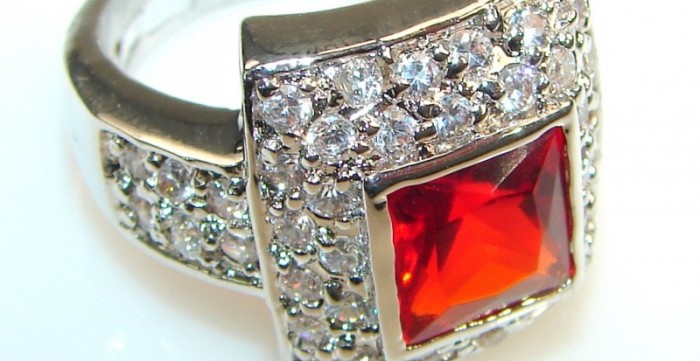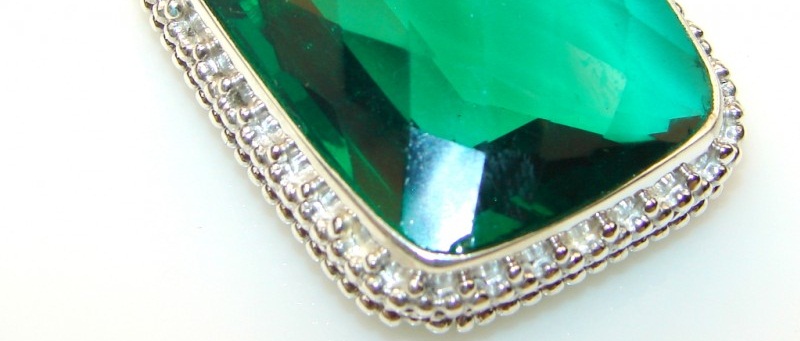Unique Gemstones By Irradiation: What To Know Before You Buy

A gemstone you purchase can be either a natural color or something very different, depending on whether or not it has gone through the process of irradiation. Many people may be unaware of what irradiation is or why it’s practiced, but it’s actually quite commonly used throughout the jewelry industry.
Which Gemstones Can be Irradiated?
Some types of gemstones will not be used for irradiation, while for others it is very common to have the color changed through irradiation in an effort to create an appearance that will be more appealing to potential buyer. Commonly irradiated gemstones include:
- Diamonds
- Pearls
- Quartz
- Topaz
As you can see, the gemstones that often go through this process are among the most popularly purchased and made into jewelry. For each gemstone, the color change will vary based on their starting color and properties. Whether a gemstone is already colored or is clear beforehand is a major factor in determining what it will look like after the irradiation process is completed.
- Diamonds can change from being clear or a light white to blue or green
- Pearls can change from a light white to gray, gray-blue, or black
- Quartz can change from being clear or a light color to brown, amethyst, gray, or rose
- Topaz can change from either gold to a more bold color or from clear/light white to brown, blue, or green
For a combination of gemstones in different colors, a vendor could sell a piece of jewelry of a natural gemstone along with irradiated gemstones for a beautiful effect.
The Process of Gemstone Irradiation
The process of irradiating gemstones can happen through one of two methods: either gamma radiation or heat treatment. Gamma radiation is more common than heat treatment, the latest method. Because radiation is used in the process the change the gemstones color, there is a safe limit to how much radiation can be used as decided by the US Nuclear Regulatory Commission.
Gamma radiation uses cobalt 60 radiation with a cobalt irradiator, a nuclear reactor for neutron bombardment, or an accelerator for electron bombardment to release electrons in order to change the color of the gemstone. The color change occurs because it changes the composition and crystalline structure that effects how the stone is able to absorb light.
Gamma radiation is used to change the color of topaz, quartz, and diamonds. One of the most popular gemstones to go through gamma radiation is the topaz. The process changes and enhances the color from clear to a rich sky blue that resembles aquamarine. The effects of irradiation are meant to last a long time, but can be altered and fade when exposed to natural light.
Because irradiated blue topaz is so common, there is a belief that this specific gemstone is extremely harmful due to the radiation process, but according to the NRC, there is no need to worry. No one has been harmed by wearing this irradiated gemstone and vendors continue to sell it in stores.
Heat treatment to alter the structure and composition to irradiate a gemstone can occur naturally or artificially. A natural heat treatment takes occurs by placing it in an open fire and an artificial heat treatment uses a controlled method to regulate the temperature.
What to Know to Purchase an Irradiated Gemstone
If you are considering purchasing an irradiated gemstone or wish to know the difference between different colored gemstones, here are some tips to help you find what you are looking for in your jewelry. To begin with, if a gemstone such as a diamond is colored, assume right away that it has gone through irradiation treatment by gamma rays or heating. As mentioned before, all treated gemstones at irradiation facilities that import and export gemstones are regulated by the Nuclear Regulatory Commission or USNRC.
When you decide to purchase a gemstone, there are different sets of criteria that you can go by such as the hue, saturation, and more importantly the color. When an irradiated gemstone goes through the radiation and heating process, the end-product will not always be a perfect shade of the color as planned. Gemstones that have had a successful treatment should be a vivid and bright color.
If it is too dark or too light, then the process might not have been successful, but you do not have to worry about purchase a gemstone that is not perfect. If it is not the perfect shade, then a trusted vendor will not plan on selling it to a customer. There still may be small flaws and inclusions, but aquamarine and blue topaz rarely have inclusions whereas quartz will most likely have a couple on the surface.
Like other gemstones, irradiated gemstones should have a cut that is symmetrical and polished. The jeweler should inform you if the gemstone has been treated or not—treated stones are usually available at a lower price than natural ones. If the jewelry on display is not specified, be sure to ask the jeweler which types of treatment it has gone through and if any additional care is necessary. Be sure that your gemstone comes with a certificate or grading report by a gemological laboratory stating that it has been measured and examined by graders who are knowledgeable of different gemstones. If you purchase a gemstone second-hand, find out if it has a certificate to go along with it. And if you plan to resell it, make sure you hang onto the certificate as well.
When searching for a unique gemstone with vivid color, consider a gemstone that has been through the irradiated treatment process. Because each gemstone that has gone through an irradiation process has been certified, you know that what you purchase will be the real deal.
You may also like ...
- The Most Valuable Gemstones You Never Knew Existed
- Thoughtful Gifts For Your Girlfriend: The First Anniversary
- How To Choose Jewelry For Sensitive Skin
- How Does A Gemstone Appraisal Work?
- Just How Well Will A Jewelry Cleaning Recipe Work? The Best Methods To Try To Clean Gems At Home
- 10 ways to choose jewelry














